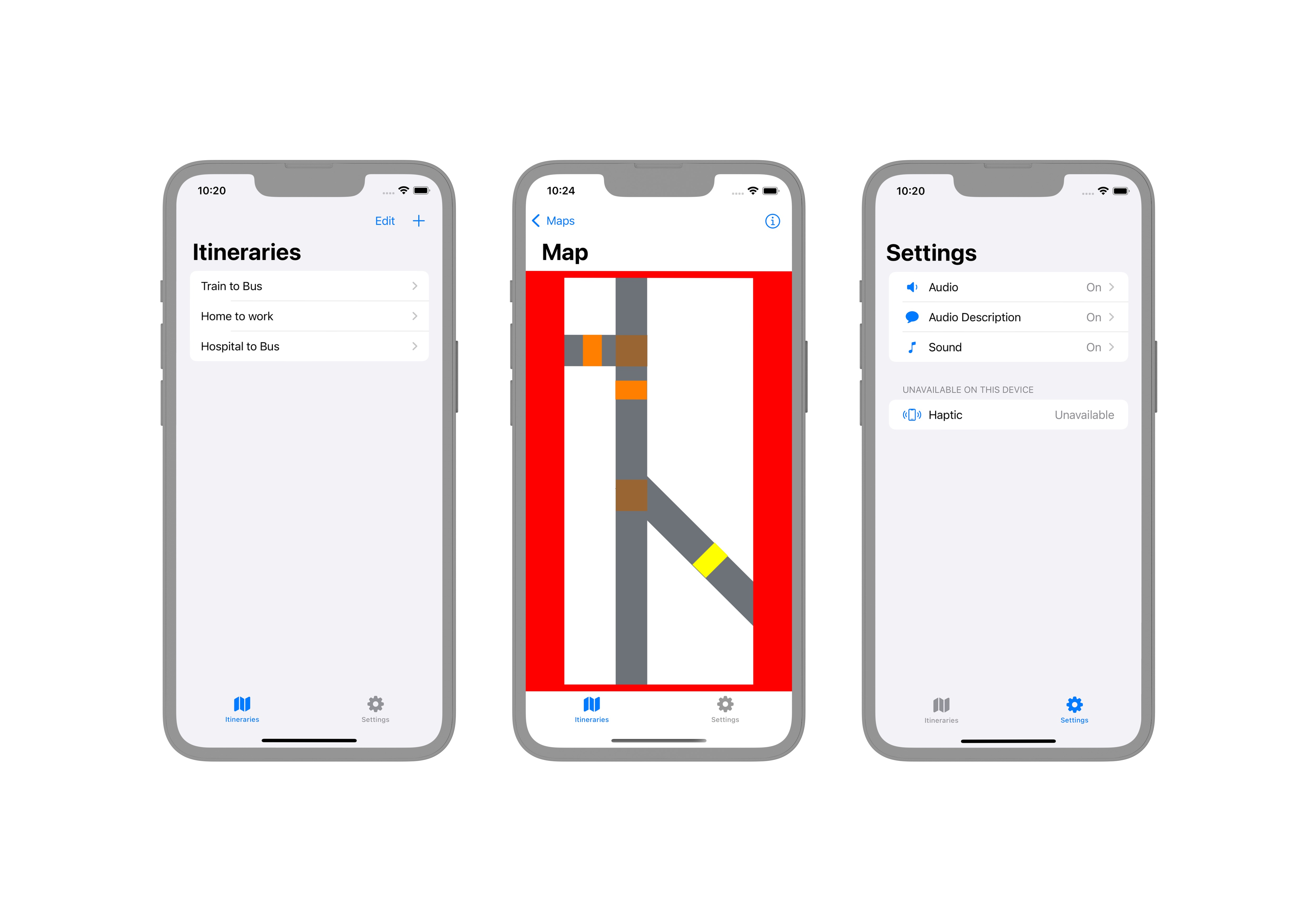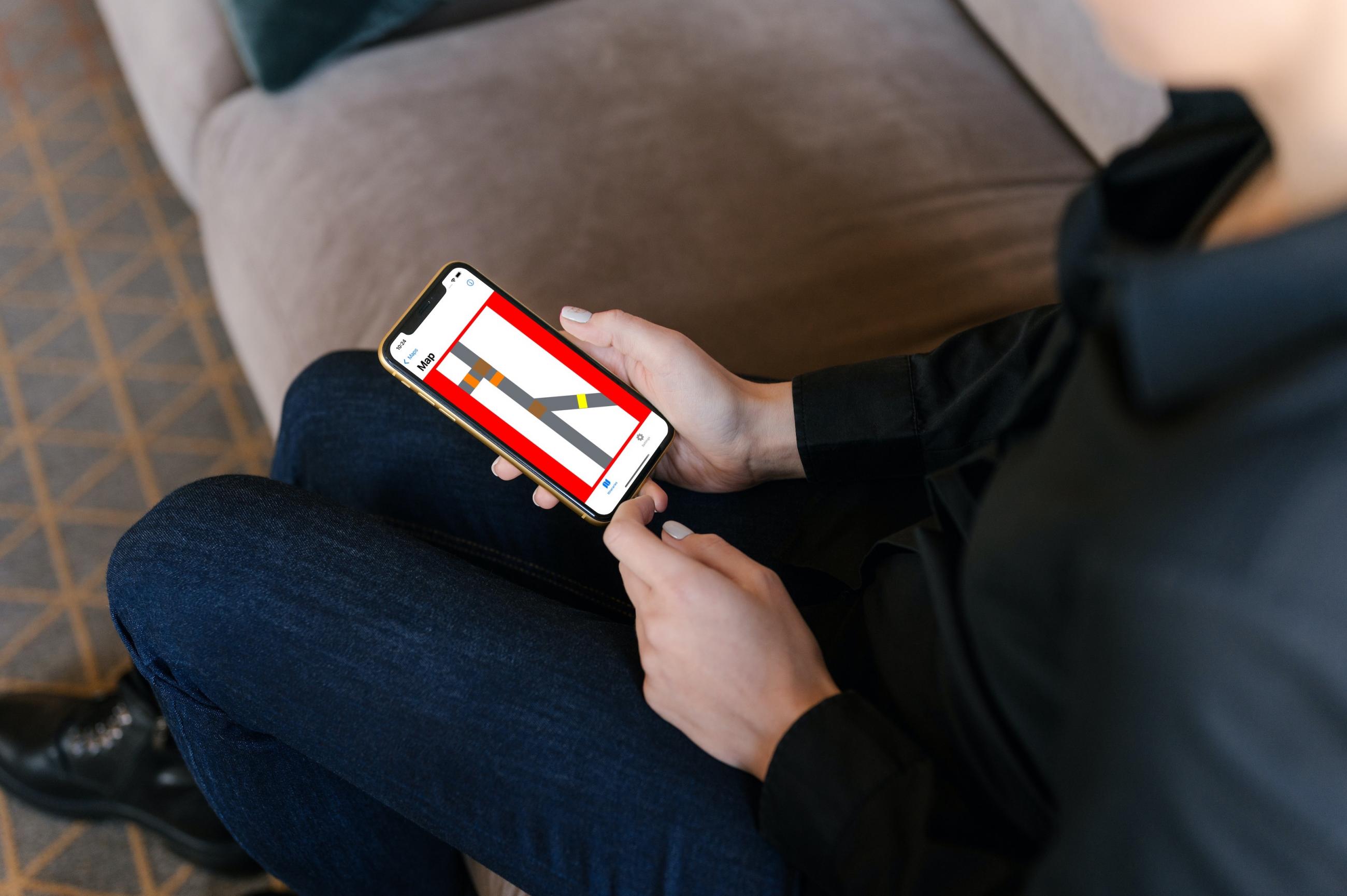Thanks to the App HapticMap, users can “discover” indoor or outdoor maps by moving their fingers on the screen using a combination of haptic and audio feedback. As a result, low vision and blind people can "feel" maps on a smartphone for the first time ever, significantly improving their autonomy and encouraging mobility.
This project was developed by ELCA Digital Agency teams as part of an EPFL Master Project Internship Program in collaboration with ELCA Innovation Lab Incubator Program. In-the-field feedback from users is excellent, and the Swiss Federation for Blind and Low vision is considering making this application available on a larger scale. Additionally, such a tool is expected to be used by locomotion experts, complementing current methods.
The Swiss federation of the Blind and Low Vision will host the application HapticMap as an Open-Source project. Moreover, we intend to explore multiple use cases. On the one hand, it is important to get information on a user's surroundings at an outdoor place. On the other hand, it is important to provide information on complex indoor locations.
Butera Luciano
The Swiss Federation of the Blind
The white cane is here to stay
With this project, we are nowhere near replacing the traditional white cane with current technologies; hundreds of projects have tried to do so and failed. The reasons for this are a combination of reliability, simplicity, and cognitive overload. A white cane will always work; no battery, no electronics, no bugs. On the other hand, any device that implies technology has a non-zero risk of failing to detect obstacles which, even if such risk is low, is sufficient enough to break the confidence that users have in the device.
Moreover, technologies trying to guide the user with sounds and signals failed. This is because blind people have to be highly focused while moving. They have to listen to every sound, try to feel the surroundings, and not get lost. Therefore, by adding stimulus and trying to inform the person of obstacles while giving directions, the human brain is quickly overloaded, which is counter-productive.
However low-vision and blind people use smartphones. Using iPhone's screen reader VoiceOver, users can use the majority of their phone’s functionalities. It describes what's on the screen and provides a set of gestures to interact with the phone.
With Haptic Map blind people can see maps on their smartphones
Haptic Map is an iOS application to facilitate low-vision or blind people's navigation and mental space representation. Users create itineraries. Each itinerary consists of a list of static maps covering areas of the itinerary that are important or complicated.
Low-vision or blind users can discover maps by moving their fingers on the screen and receiving a combination of haptic feedback, voice description, and sounds. Haptics feedback is specifically crafted vibrations using the Haptic Engine on the device. Using this, the app sends different textures to the user depending on what's under the finger on the map. This way, low-vision and blind people can now see maps on their smartphones for the first time ever.


On HapticMap, different vibration textures are presented depending on the item below the user's feedback. For example, feel a grass texture if the map includes a park, slow vibrations for a road, and sharp and intense vibrations for a pedestrian crossing.


The Swiss Federation of the Blind and Low Vision finds the development of HapticMap of great use. The application improves the orientation of blind and low-vision users significantly by giving acoustic and haptic feedback while exploring the map.
Butera Luciano
THe Swiss Federation of the Blind
On iPhones, a special component called Topic Engine allows for extremely precise vibrations generation. It is as accurate as a speaker just by delivering vibrations.
Physical maps vs HapticMap
Physical maps for blind people exist and are sometimes used while learning itineraries with a locomotion expert. However, such maps cannot leave the office, which means the patient has no material when they get back home. If the person does not follow the itinerary regularly, there is a risk that s/he might forget the details and get lost.
3D maps are also sometimes found on large buildings but are expensive, and are extremely rare. HapticMap can be in the pockets of all users at no cost. Everybody can create maps using simple drawing tools and represent indoor or outdoor places.
This project has been developed with a strong user-centered design approach to understand the specific needs and goals of low-vision and blind people. Learning from field studies, semi-structured interviews with low-vision people, subject matter expert interviews, and a literature review led us to the conclusion that the white cane is here to stay. Technology has a role to play but not where we expected at the beginning of the project.
At ELCA Digital Agency, we know that technology only matters if it truly serves the people who use it. We expect this project will contribute to the accessibility of low- vision and blind people everywhere HapticMap can be applied.
Special thanks to:
Timotee Duran
Fédération Suisse des aveugles et malvoyants (FSA)
Swiss National Association of and for the Blind (UCBA)
Hôpital ophtalmique Jules-Gonin - Service social et réadaptation basse vision
Centre pédagogique pour handicapés de la vue (CPHV)
L'École de la pomme
SBB Inclusive Team
Group of low vision and blind patients and other interviewees
Hassane Assendal
Architect
Introducing Hassane Assendal, Frontend Architect
